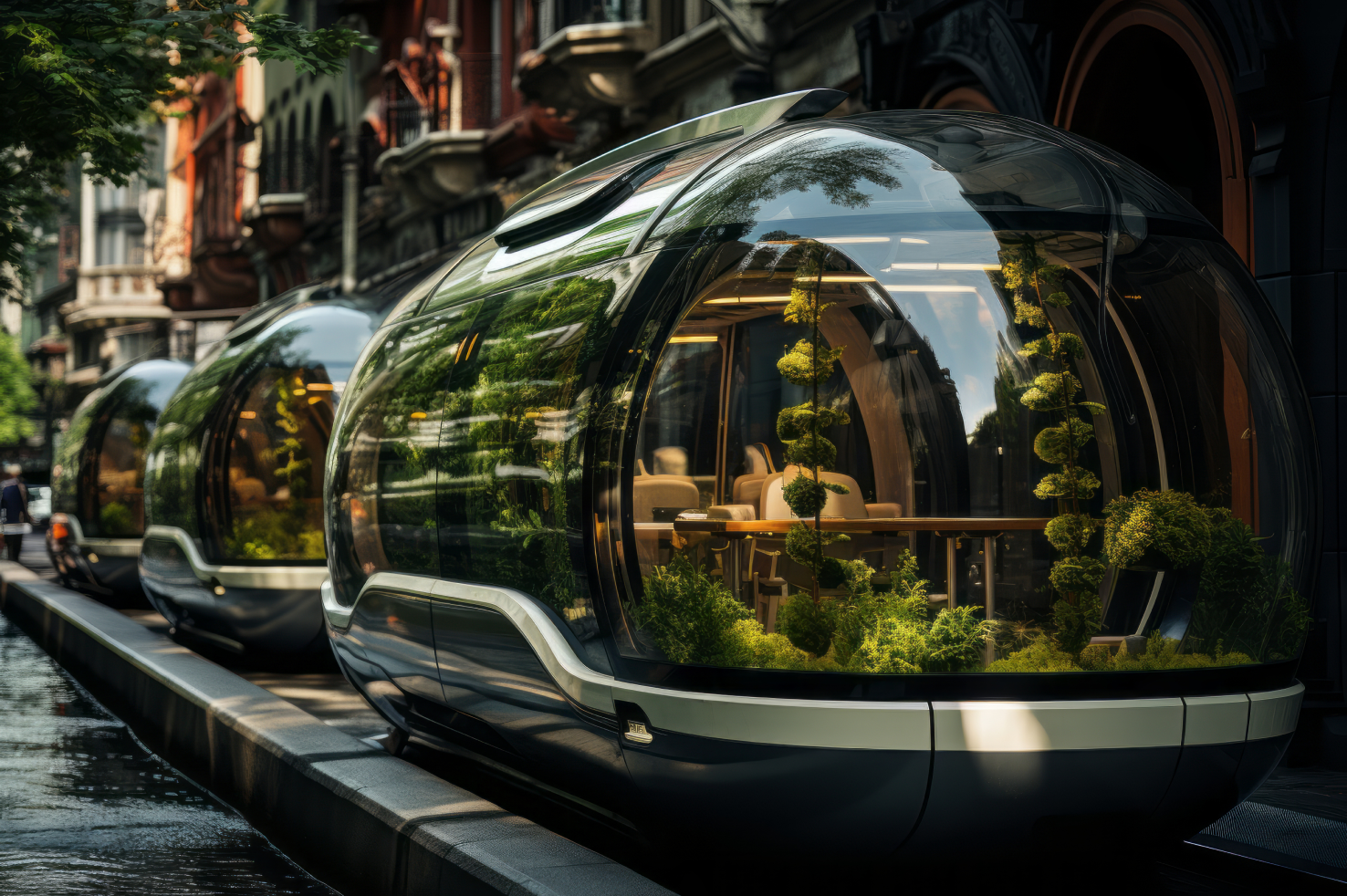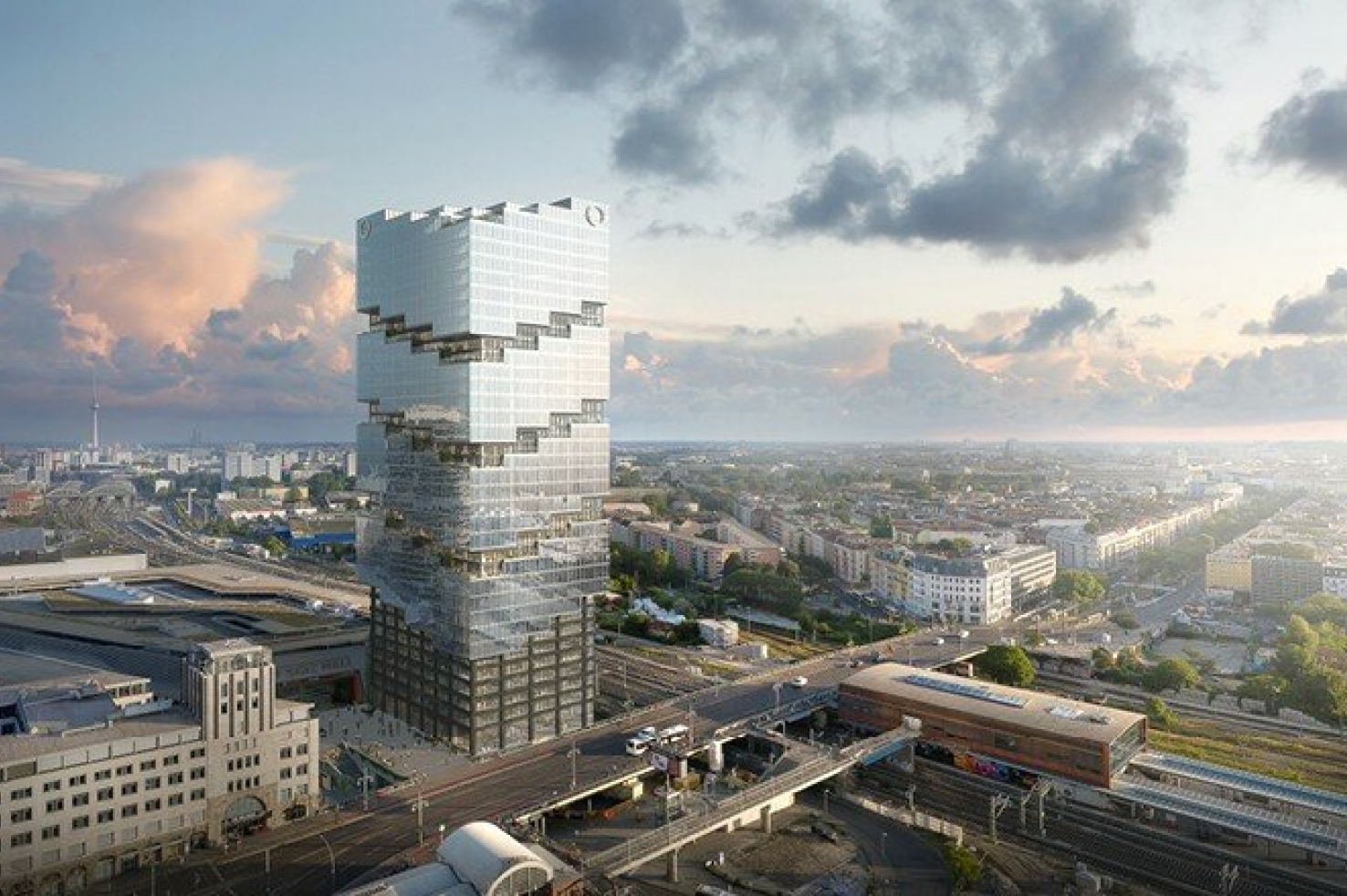Cities are the growth engine of the global economy, but to thrive they need high-quality real estate – the buildings where we live, work, and shop. With the demand for future cities to be cleaner, smarter, and more sustainable, owners and operators face major structural challenges, presenting opportunities for investors.
| CITIES DEPEND ON REAL ESTATE
The power and prosperity of today’s cities define the modern world. More than half of us already live in one. By 2050, that will have increased to at least 70% of the population. Combined, cities’ economic power contributes to more than 80% of global GDP.
Even when the 2020 pandemic sparked fears of an urban exodus, many people simply swapped a large metropolis for medium or smaller cities instead. The long-term urbanisation megatrend continues to gather pace.
Central to this trend is real estate. It’s the world’s biggest store of wealth, valued at more than USD 290 trillion (more than global equity and bond markets combined). With so much prime real estate based in cities (for example, office blocks, retail space, and modern apartments), the future success of our cities depends on how real estate owners and investors react to any potential challenges.

"The long-term urbanisation megatrend continues to gather pace... Central to this trend is real estate. It’s the world’s biggest store of wealth, valued at more than USD 290 trillion (more than global equity and bond markets combined)"
The changing face of real estate – three structural challenges
Recent years have seen the emergence of three structural challenges for real estate owners and operators:
➊ The rise of online shopping and its impact on bricks-and-mortar retailers.
➋ Increased remote working, reducing the need for office space.
➌ The growing need to replace an ageing building stock.
| RETAIL APOCALYPSE
Online shopping, through major e-commerce platforms, has taken its toll on retailers. In Germany, where the market share of online shopping has increased from 4% to 15% since 2010, Karstadt and Kaufhof, two department stores both more than a century old, first merged, then closed nearly half of their branches in an effort to survive a retail apocalypse. Meanwhile, in the US, famous brands, including Sears, RadioShack, and Toys’R’Us have all gone bust, unable to keep up with online competition.
| WORK FROM HOME
When the pandemic struck, lockdowns forced many employees to switch to remote working. For many, this adjustment became permanent, as several chose to work from home some or all of the time. The pace at which people have returned to the office post-pandemic has varied depending on the country or even city, but it seems clear that for many office workers, the five-day week is a thing of the past. Data from Kastle Systems, which provides access controls in the US, shows office attendance in US cities has recovered to just 40– 60% of pre-pandemic levels. In other words, most staff work at home two or three days. The situation is broadly similar in Europe, with some regional differences. For real estate owners and operators, the immediate affect is lower office occupancy rates, shrinking demand for office space, and rising vacancy rates. With rental contracts tending to have a long duration, there is a time lag between lower occupancy rates and higher vacancy rates.

| AGEING BUILDINGS
The third structural challenge is replacing an ageing building stock. This is most acute in Europe, where more than 60% of all residential properties (around 160 million) were built before 1980. Many are much older; in Berlin, London, Paris, and Vienna, for example, the average residential building is more than 70 years old.
Updating the building stock is particularly important when considering the issue of sustainability. Buildings account for around 40% of global CO2 emissions, rising from around seven gigatonnes of CO2 equivalent (CO2e) in 1990 to 12 gigatonnes in 2020. The European Union (EU) says 75% of the region’s building stock are not energy efficient, and 97% don’t meet the efficiency levels to meet 2050 net-zero targets. The picture is not the same in Asia and the Middle East, where buildings are much younger and new projects are more likely to incorporate state-of-the-art building efficiency and technology. The key to decarbonising buildings lies in breaking the link between population growth, prosperity growth, and emissions, with technology being the solution.

| RENOVATE AND MODERNISE – THE KEY TO SUCCESS
How do real estate owners and operators address these structural challenges? The answer in all three cases is investment.
This could seem at odds with the current crisis in commercial real estate. Modern tenants require spaces to be cleaner, smarter, and more sustainable. Therefore, renovating and modernising the existing building stock is essential if owners and operators are to retain existing tenants and attract new ones – and, as a result, preserve property values. Put simply, not investing is not an option.
Some property owners aim to repurpose their building stock: for example converting offices into apartments, and former retail spaces into restaurants. Success stories in recent years have included redeveloping former industrial and harbour areas, although these projects require sizeable investments.
The sustainability push is helping drive this move to modernise. In Europe, as part of the 2021 Green Deal, the EU targets an annual renovation rate of around 3% to make the buildings fit for the future. Of that, 70% needs to be ‘deep’ renovations, targeting energy savings of 60% or more. The current renovation rate in the EU is only 1%, with ‘deep’ renovations accounting for around a fifth of these properties.
Examples from various cities and countries show the real estate market is increasingly differentiating between higher-quality and lower-quality properties. So, while the mantra of ‘location, location, location’ is still important, a building’s sustainable credentials also play an important role in terms of pricing dynamics. In Germany, for example, residential buildings with the worst energy-efficiency labels sell at steep discounts of up to 30% compared with those properties with the best ratings.
Technology is also helping make buildings ‘smarter’. Building information systems (BIS) allow architects to design more efficient buildings, by creating ‘digital twins’ of proposed developments or plans to retrofit. Meanwhile, building automation systems (BAS) help optimise a building’s performance allowing designers and owners to simulate different design scenarios and evaluate their operational impact.
"In Europe, as part of the 2021 Green Deal, the EU targets an annual renovation rate of around 3% to make the buildings fit for the future. Of that, 70% needs to be ‘deep’ renovations, targeting energy savings of 60% or more. The current renovation rate in the EU is only 1%, with ‘deep’ renovations accounting for around a fifth of these properties"

| HOW RESHAPING REAL ESTATE OFFERS OPPORTUNITIES FOR INVESTORS
This increased urgency to renovate and modernise offers several potential opportunities across a number of sectors.
With construction-material prices and interest rates both past their peak, we believe that the stage is now set for construction activity to increase, on both new projects and the renovation of old properties.
The real estate markets are increasingly differentiating between higher-quality and lower-quality properties, particularly in terms of a building’s sustainability credentials. In order to preserve the value of real estate, we believe there is no other option than to invest in building efficiency and technology.
State-of-the-art buildings demonstrate in a very impressive way not only what is possible today to reduce operating carbon emissions, but also that such buildings make sense economically and environmentally, supported by:
Electrical engineering
The importance of electrical engineering in commercial property has increased massively in recent years, even before our buildings started to become smarter. It includes the design and installation of electrical systems to ensure functionality, efficiency, and safety.
Heating and cooling
The heating and cooling systems of a building are one of the main drivers of its energy consumption. Factoring in our expectation of abundant clean energy supplies and lower power prices, we see heat pumps as a structural growth story. Cooling is a much bigger market than heating globally and it is set to grow further, driven by global warming, growing prosperity, and expanding access to electricity.
Insulation
Proper insulation is one of the biggest levers to pull to improve energy efficiency, also offering the shortest pay-back periods. With three out of four buildings in the European Union not considered energy-efficient, there is a lot of room to improve the existing real estate stock.


For embodied carbon, we are facing much bigger challenges. While we know how to decarbonise the heavy industry in general and construction materials in particular, the required technologies are not available at scale and in a cost-competitive way. Regardless of the method used to reduce embodied carbon, they all require leaving established paths behind.
The regulatory environment will continue to play a crucial role in building efficiency and technology investments despite becoming more unpredictable. We welcome regulatory support for transition technologies like heat pumps, but believe their preference should primarily be based on economic and environmental rationale.
Real estate will continue to play a vital role in the creation of modern, dynamic future cities. Given the slowly improving cyclical backdrop and the overwhelming need for owners to preserve the value of their real estate, we believe there are strong reasons for optimism in this area of investment.

Julius Baer
International wealth management group, based on a solid Swiss heritage. Special thanks to Carsten Menke & Nikolaus Werner.
juliusbaer.com




